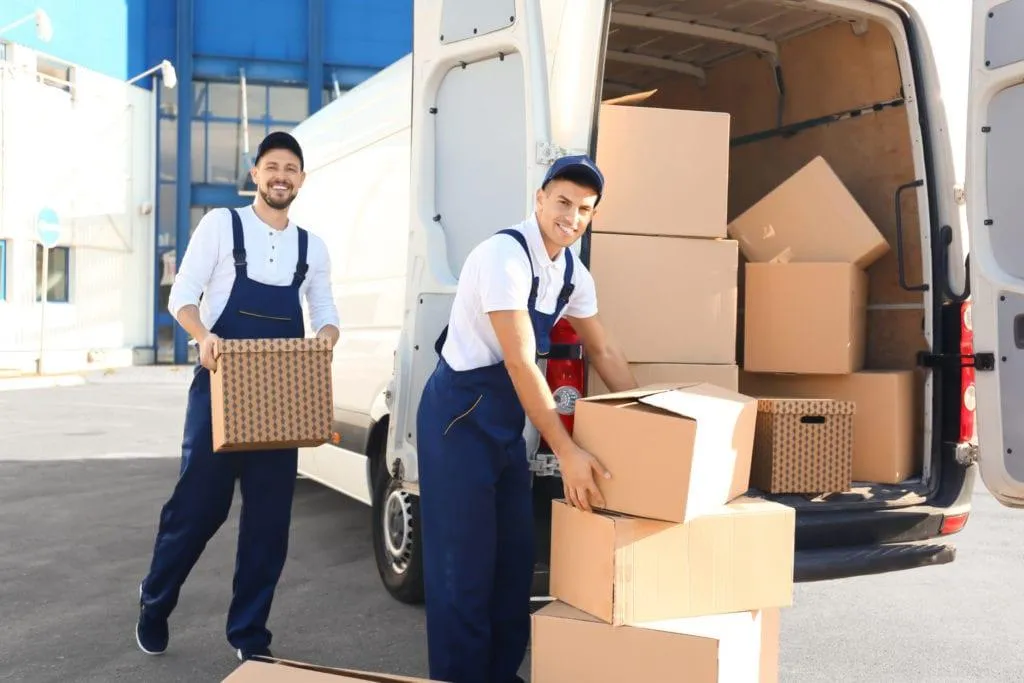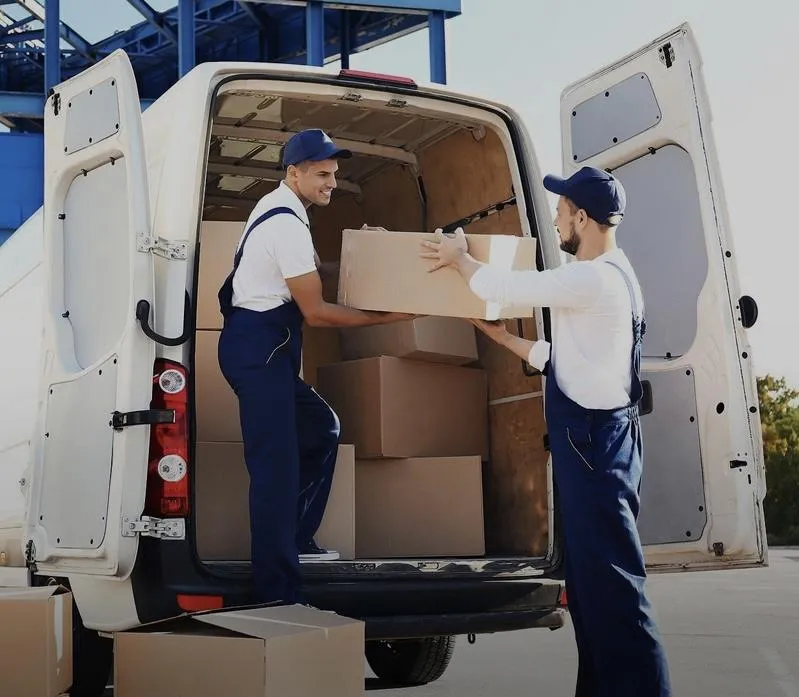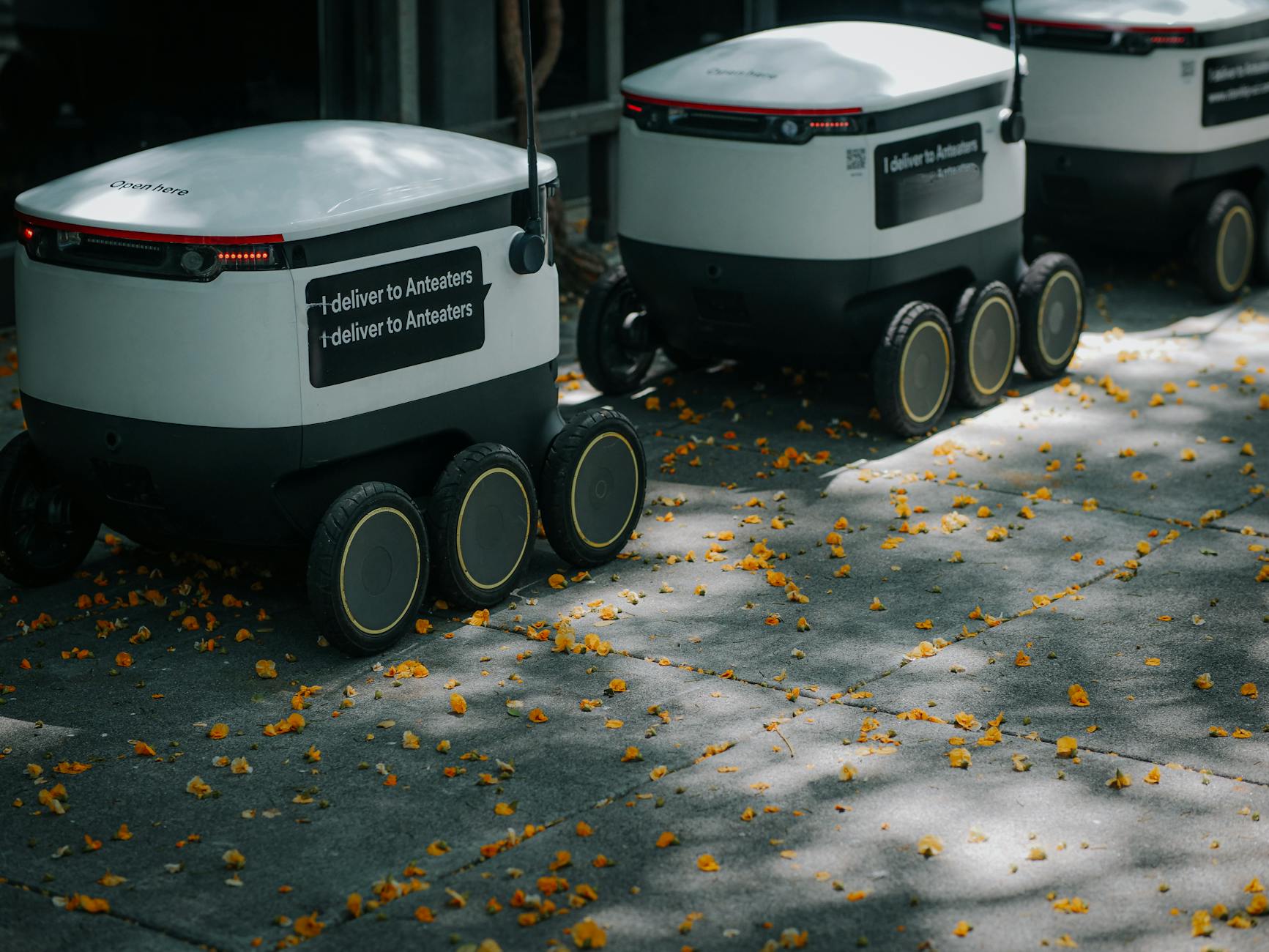Sort & Filter
- Overall Performance
- Lowest price
- A-Z Provider List
- Z-A Provider List
- No elements found. Consider changing the search query.
- List is empty.
- Morning
- Afternoon
- Evening
- Anytime
- No elements found. Consider changing the search query.
- List is empty.
- 2 hours
- 3 hours
- 4 hours
- 5 hours
- 6 hours
- 7 hours
- 8 hours
- 9 hours
- 10 hours
- 11 hours
- 12 hours
- 13 hours
- 14 hours
- 15 hours
- 16 hours
- 17 hours
- 18 hours
- 19 hours
- 20 hours
- 21 hours
- 22 hours
- 23 hours
- 24 hours
- No elements found. Consider changing the search query.
- List is empty.
- 1 helper
- 2 helpers
- 3 helpers
- 4 helpers
- No elements found. Consider changing the search query.
- List is empty.




EasyNest
SMÜVguard® Coverage Eligible
★ ★ ★ ★ ★
Rates Include:
Load/Unload

True Path America
SMÜVguard® Coverage Eligible
★ ★ ★ ★ ★
Rates Include:
Load/Unload

Essential Transport
SMÜVguard® Coverage Eligible
★ ★ ★ ★ ★
Rates Include:
Load/Unload
Smoove Move Courier
★ ★ ★ ★ ★
Safeguard® Coverage Eligible
Price varies on selected coverage
Your Quote Includes:
4hrs / 2hrs / 1hr / ASAP
(regular business days)
Courier/Transport
Smoove Move Mover
★ ★ ★ ★ ★
Safeguard® Coverage Eligible
Price varies on selected coverage
Your Quote Includes:
2 Person Crew,
2 Hours of Help
Load/Unload
Smoove Move Logistic
★ ★ ★ ★ ★
Safeguard® Coverage Eligible
Price varies on selected coverage
Your Quote Includes:
Logistic/Operation

Smoove Move Movers
SMÜVguard® Coverage Eligible
★ ★ ★ ★ ★
Rates Include:
Load/Unload
EasyNest
★ ★ ★ ★ ★
Safeguard® Coverage Eligible
Price varies on selected coverage
Your Quote Includes:
2 Person Crew,
2 Hours of Help
Load/Unload
True Path America
★ ★ ★ ★ ★
Safeguard® Coverage Eligible
Price varies on selected coverage
Your Quote Includes:
2 Person Crew,
2 Hours of Help
Load/Unload
Essential Transport
★ ★ ★ ★ ★
Safeguard® Coverage Eligible
Price varies on selected coverage
Your Quote Includes:
2 Person Crew,
2 Hours of Help
Load/Unload
Smoove Move Movers
★ ★ ★ ★ ★
Safeguard® Coverage Eligible
Price varies on selected coverage
Your Quote Includes:
2 Person Crew,
2 Hours of Help
Load/Unload

Navigating the Future of Logistics
SMOOVE MOVE LOGISTICS: Leading the Future of Smart, Green, and Reliable Shipping [2025 Guide]
Shipping is changing fast. New tech and rising customer demands push companies to be quicker, greener, and more reliable than ever. SMOOVE MOVE LOGISTICS is leading this shift, using smart automation and real-time tracking to deliver for both businesses and everyday shoppers.
In 2025, supply chains need to bounce back from disruptions, meet strict green goals, and keep costs in check. SMOOVE MOVE LOGISTICS meets these challenges head-on with AI, advanced data systems, and a commitment to transparency. This isn’t just about moving packages—it's about building trust and shaping a smoother, smarter future for shipping.
Get ready to see how smarter strategies and a focus on people put SMOOVE MOVE LOGISTICS ahead of the curve. Follow along to learn how these changes make shipping simpler for everyone.
Industry Growth and the Need for Innovation

Photo by Vietnam Real Estate
The world expects faster, greener, and more reliable shipping. The logistics industry is answering that call—and it’s just getting started. Explosive growth in freight demand, fresh waves of online orders, and tighter regulations all drive the need for new ideas. Providers who want to stay ahead need to rethink how they move goods from start to finish. Let’s break down why innovation is so important right now.
Market Expansion and Rising Expectations
Global logistics is booming, fueled by more than just online shopping. In 2025, industry experts see robust growth worldwide, especially in air and international freight. Major markets like Asia and North America push demand higher as more businesses rely on seamless cross-border shipping. E-commerce shows no signs of slowing, with online sales expected to make up more than a quarter of all retail activity in the U.S. and even higher rates worldwide.
But growth brings new challenges:
Customer demands keep climbing. Customers want real-time tracking, shorter delivery windows, and reliable service every time.
Expectations for sustainability are rising. Shippers now ask about emissions, greener packaging, and supply chain transparency.
Technology is no longer optional. Innovative solutions, from warehouse robots to connected trucks, have moved from “nice to have” to “must have.”
Providers who respond to these needs quickly will earn long-term loyalty. Those who resist risk falling behind. Read more about these global trends in 2025 Trends in the Logistics Industry and see how demand is reshaping every link in the chain.
Operational Pressures: Cost, Speed, and Resilience
Staying profitable isn’t just about moving more shipments—it’s about doing it smarter. The pressure to make every dollar count is higher than ever.
Costs are rising almost everywhere. Labor shortages, expensive fuel, and higher rents for warehouses chip away at profit margins.
Speed is the name of the game. Next-day and even same-day shipping are the new normal. Businesses expect tighter schedules with little room for error.
Disruptions test every system. Natural disasters, strikes, and global shocks make it tough to promise on-time delivery. Keeping shipments moving takes creativity and robust systems.
Smart logistics companies embrace these challenges with flexible supply chains, backup plans, and heavy investment in technology. For a deep dive into what’s driving today’s logistics landscape, check out the Logistics Trend Map for 2025 and explore what future-ready operations look like.
Innovation isn’t just a buzzword—it’s the ticket to growth, survival, and real value for customers as the logistics world gets bigger and more complex every year.
Tech That’s Changing How We Move
Technology is rewriting the rules of logistics, making each shipment smarter, faster, and easier to control. SMOOVE MOVE LOGISTICS puts this new tech to work every day—from real-time tracking that offers instant updates, to robots that pack and ship without breaking a sweat, and AI that predicts demand before a peak shopping rush hits. These tools don't just save time—they give customers and businesses peace of mind.
Real-Time Tracking and IoT Sensors: Boosting Visibility With Instant Updates
Every package has a story, and now we can track it every step of the way. With real-time tracking powered by IoT sensors, businesses get instant updates about where their goods are and how they’re doing. These smart sensors fit into trucks, containers, and even single packages. They report on location, temperature, humidity, or shocks, so nothing gets lost and quality stays high.
The real wins:
Total visibility: Managers see what’s happening across the supply chain, cutting surprises.
Smart decisions: Fast alerts help teams reroute shipments or fix issues before they cost money.
Customer confidence: Shoppers like knowing where their order is at any time.
These advances are making logistics more reliable and less stressful. Learn how companies are using IoT devices for tighter control in this guide on real-time tracking with IoT in logistics.
Automation in Warehousing and Delivery: The Rise of Smart Robots

Photo by Kindel Media
Warehouses are buzzing with robots that sort, pick, and pack orders with amazing speed. By mixing automated systems with skilled workers, SMOOVE MOVE LOGISTICS shortens delivery times and reduces mistakes. Robots never get tired. They work night shifts and keep pace when online shopping spikes, especially during holidays and big sales.
Key benefits include:
Faster order turnaround that keeps customers satisfied.
Fewer errors, since robots and automated conveyors rarely make costly mistakes.
Lower costs by cutting waste and using staff for more important tasks.
Warehouse automation comes in many forms, like conveyor belts that move pallets or robotic arms that build orders. Explore more about the top trends in warehouse automation and see how these changes are pushing businesses forward.
AI for Smarter Routing and Predictive Analytics
AI is the brain behind much of modern logistics. It quickly sorts through traffic data, road closures, and weather conditions to pick the fastest routes. But it doesn’t stop there. Smart systems can look at past trends and spot upcoming bottlenecks, so drivers ship more in less time—even during busy seasons.
AI’s impact shines in:
Optimizing routes, which shaves off costs and cuts delivery stress.
Predicting demand, letting companies stock up before customers rush in.
Reducing empty runs, because AI fits more shipments together, saving fuel and cutting emissions.
The best part? AI learns and improves with more data. It helps everyone from small shops to global brands offer a better delivery experience. Dive into how AI is reinventing route optimization and predictions for smarter shipping and supply chain management.

Navigating the Future of Logistics
SMOOVE MOVE LOGISTICS: Leading the Future of Smart, Green, and Reliable Shipping [2025 Guide]
Shipping is changing fast. New tech and rising customer demands push companies to be quicker, greener, and more reliable than ever. SMOOVE MOVE LOGISTICS is leading this shift, using smart automation and real-time tracking to deliver for both businesses and everyday shoppers.
In 2025, supply chains need to bounce back from disruptions, meet strict green goals, and keep costs in check. SMOOVE MOVE LOGISTICS meets these challenges head-on with AI, advanced data systems, and a commitment to transparency. This isn’t just about moving packages—it's about building trust and shaping a smoother, smarter future for shipping.
Get ready to see how smarter strategies and a focus on people put SMOOVE MOVE LOGISTICS ahead of the curve. Follow along to learn how these changes make shipping simpler for everyone.
Industry Growth and the Need for Innovation

Photo by Vietnam Real Estate
The world expects faster, greener, and more reliable shipping. The logistics industry is answering that call—and it’s just getting started. Explosive growth in freight demand, fresh waves of online orders, and tighter regulations all drive the need for new ideas. Providers who want to stay ahead need to rethink how they move goods from start to finish. Let’s break down why innovation is so important right now.
Market Expansion and Rising Expectations
Global logistics is booming, fueled by more than just online shopping. In 2025, industry experts see robust growth worldwide, especially in air and international freight. Major markets like Asia and North America push demand higher as more businesses rely on seamless cross-border shipping. E-commerce shows no signs of slowing, with online sales expected to make up more than a quarter of all retail activity in the U.S. and even higher rates worldwide.
But growth brings new challenges:
Customer demands keep climbing. Customers want real-time tracking, shorter delivery windows, and reliable service every time.
Expectations for sustainability are rising. Shippers now ask about emissions, greener packaging, and supply chain transparency.
Technology is no longer optional. Innovative solutions, from warehouse robots to connected trucks, have moved from “nice to have” to “must have.”
Providers who respond to these needs quickly will earn long-term loyalty. Those who resist risk falling behind. Read more about these global trends in 2025 Trends in the Logistics Industry and see how demand is reshaping every link in the chain.
Operational Pressures: Cost, Speed, and Resilience
Staying profitable isn’t just about moving more shipments—it’s about doing it smarter. The pressure to make every dollar count is higher than ever.
Costs are rising almost everywhere. Labor shortages, expensive fuel, and higher rents for warehouses chip away at profit margins.
Speed is the name of the game. Next-day and even same-day shipping are the new normal. Businesses expect tighter schedules with little room for error.
Disruptions test every system. Natural disasters, strikes, and global shocks make it tough to promise on-time delivery. Keeping shipments moving takes creativity and robust systems.
Smart logistics companies embrace these challenges with flexible supply chains, backup plans, and heavy investment in technology. For a deep dive into what’s driving today’s logistics landscape, check out the Logistics Trend Map for 2025 and explore what future-ready operations look like.
Innovation isn’t just a buzzword—it’s the ticket to growth, survival, and real value for customers as the logistics world gets bigger and more complex every year.
Tech That’s Changing How We Move
Technology is rewriting the rules of logistics, making each shipment smarter, faster, and easier to control. SMOOVE MOVE LOGISTICS puts this new tech to work every day—from real-time tracking that offers instant updates, to robots that pack and ship without breaking a sweat, and AI that predicts demand before a peak shopping rush hits. These tools don't just save time—they give customers and businesses peace of mind.
Real-Time Tracking and IoT Sensors: Boosting Visibility With Instant Updates
Every package has a story, and now we can track it every step of the way. With real-time tracking powered by IoT sensors, businesses get instant updates about where their goods are and how they’re doing. These smart sensors fit into trucks, containers, and even single packages. They report on location, temperature, humidity, or shocks, so nothing gets lost and quality stays high.
The real wins:
Total visibility: Managers see what’s happening across the supply chain, cutting surprises.
Smart decisions: Fast alerts help teams reroute shipments or fix issues before they cost money.
Customer confidence: Shoppers like knowing where their order is at any time.
These advances are making logistics more reliable and less stressful. Learn how companies are using IoT devices for tighter control in this guide on real-time tracking with IoT in logistics.
Automation in Warehousing and Delivery: The Rise of Smart Robots

Photo by Kindel Media
Warehouses are buzzing with robots that sort, pick, and pack orders with amazing speed. By mixing automated systems with skilled workers, SMOOVE MOVE LOGISTICS shortens delivery times and reduces mistakes. Robots never get tired. They work night shifts and keep pace when online shopping spikes, especially during holidays and big sales.
Key benefits include:
Faster order turnaround that keeps customers satisfied.
Fewer errors, since robots and automated conveyors rarely make costly mistakes.
Lower costs by cutting waste and using staff for more important tasks.
Warehouse automation comes in many forms, like conveyor belts that move pallets or robotic arms that build orders. Explore more about the top trends in warehouse automation and see how these changes are pushing businesses forward.
AI for Smarter Routing and Predictive Analytics
AI is the brain behind much of modern logistics. It quickly sorts through traffic data, road closures, and weather conditions to pick the fastest routes. But it doesn’t stop there. Smart systems can look at past trends and spot upcoming bottlenecks, so drivers ship more in less time—even during busy seasons.
AI’s impact shines in:
Optimizing routes, which shaves off costs and cuts delivery stress.
Predicting demand, letting companies stock up before customers rush in.
Reducing empty runs, because AI fits more shipments together, saving fuel and cutting emissions.
The best part? AI learns and improves with more data. It helps everyone from small shops to global brands offer a better delivery experience. Dive into how AI is reinventing route optimization and predictions for smarter shipping and supply chain management.

